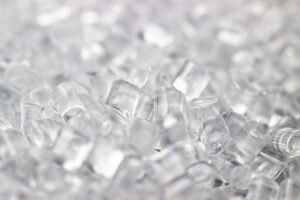
Technical Tip: The fundamentals of press shutdown
By Garrett MacKenzie, plastic411.com
Canadian Plastics Plastics ProcessesPoorly performed screw shutdowns can cause unneeded downtime and poor start-ups. Here's how to avoid problems.

Photo Credit: Adobe Stock/Irena
In the fast-paced world of plastic injection, key profit drivers are downtime, efficiencies, and scrap – a company’s success relies heavily upon quick and efficient start-ups and the elimination and avoidance of unplanned downtime.
This article will outline potential downtime events that have a direct relationship with poorly performed shutdown procedures, and will also provide a time-based approach to help reduce, and in most cases eliminate, scrap and downtime associated with press shutdown.
SCREW FAILURES
Screw shutdown conditions frequently cause unneeded downtime and poor start-ups – shutting down without running the screw dry can lead to feed throat bridging, for example, which can require hours of servicing to fix. In addition, “screw wrap” conditions – material attached to screw flights that didn’t melt during barrel soak – can occur if barrel temperatures are lowered with the barrel full of material, leading to an inability to charge the screw properly to build a shot.
Leaving the carriage forward for long periods of time can lead to nozzle drool. Presses in a shutdown state often don’t apply proper pressure to the nozzle tip and sprue bushing, which can lead to material blowback on restart. So, when a press is shut down, back the carriage off, remove material from the barrel, and retract the screw one inch to release pressure and help prevent drooling. This also sets the check ring to a neutral state, which prevents gas build-up in the screw. The sprue bushing should be inspected and cleaned in preparation for restart.
The nature of materials such as nylon, acetyl and PVC may require purging the screw with an inert material such as polypropylene (PP), styrene or a purge compound to prevent degradation.
HOT RUNNER APPROACH
Hot runners left on for extended periods of time can perform poorly due to overbaked and/or degraded materials, leading to runners/parts breaking at start-up, causing mold cleaning and repair. With clear polycarbonates, long heat exposure can cause contamination issues that lead to huge scrap events; also, high fiberglass content left in the hot runner can lead to plugged drops.
MOLD SHUTDOWN
Any time mold activity goes idle, it’s time for mold inspection and care. Slide slots and ejector/guide pins are to be inspected for damage/galling/lubrication. And in-press mold storage is vital – the mold should be left with mold halves touching but not under pressure. In addition, DO NOT spray the moveable half with mold cleaner, as this leads to a breakdown of ejector lubrication, causing oil to get on the parts at restart. Instead, spray mold cleaner on rag prior to cleaning the ejector half.
WATER SHORTFALLS
Water shutdown is crucial to downtime and damage prevention. Long-term shutdowns can lead to unnoticed leaks. When a mold isn’t moving, water performance changes! This type of leak can lead to rust, which can result in pulling a mold for service and expensive repairs.
THREE-STAGE SHUTDOWN PROCEDURE
The following procedures outline proper purging and shutdown of presses according to three basic time frames, plus a weekend shutdown, all based on using materials such as nylon.
- If press will be down for 30 minutes or less, the screw is to be run forward to remove shot from barrel; with the screw empty, the screw is to be pulled back one inch; and the purge is removed from the press bed.
- If the downtime length is unknown, or longer than 30 minutes but less than four hours, the carriage is to be retracted to separate tip from bushing; the tip is to be inspected for blow-back; the throat and barrel are to be purged completely dry with PP or a purge compound; now, with the screw empty, pull the screw back one inch; the hot runner is to be shut off; and remove the purge from the press-bed.
- If downtime will be four hours or a full shift or longer, the carriage is to be retracted to separate tip from bushing; the tip is to be inspected for blow back; the throat and barrel are to be purged completely dry with PP or a purge compound; with the screw empty, pull the screw back one inch; shut off the hot runner; spray the mold lightly with rust preventative; close the mold, not under tonnage, with mold faces touching; shut off the water at the main valves; and remove the purge from the press bed.
- Finally, for a weekend shutdown, the carriage is to be retracted to separate the tip from the bushing; inspect the tip for blowback; the throat and barrel are to be purged completely dry with PP or purge compound; with the screw empty, pull it back one inch; shut off the hot runner; spray the mold with rust preventative; close the mold, not under tonnage, with mold faces touching; shut off the water at the main valves; and bank the dryer at 37°C or 100°F.
Garrett MacKenzie is the owner/editor of plastic411.com and a consultant/trainer in plastic injection molding. He has provided process engineering expertise to many top companies, and he was inducted into the Plastic Pioneers Association (PPA) in 2019, where he serves on the Education Committee evaluating applications from college students seeking PPA scholarships. Contact him at garrett@plastic411.com.
